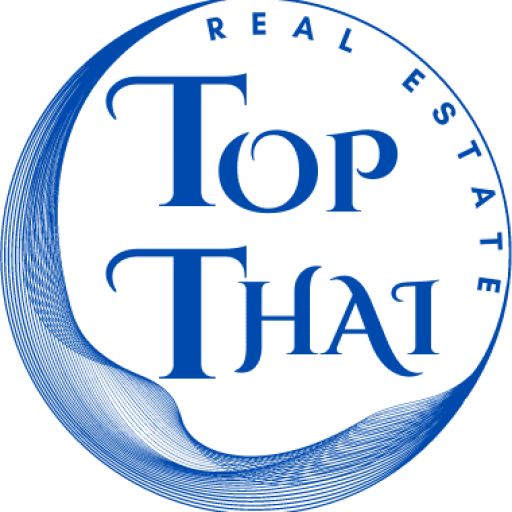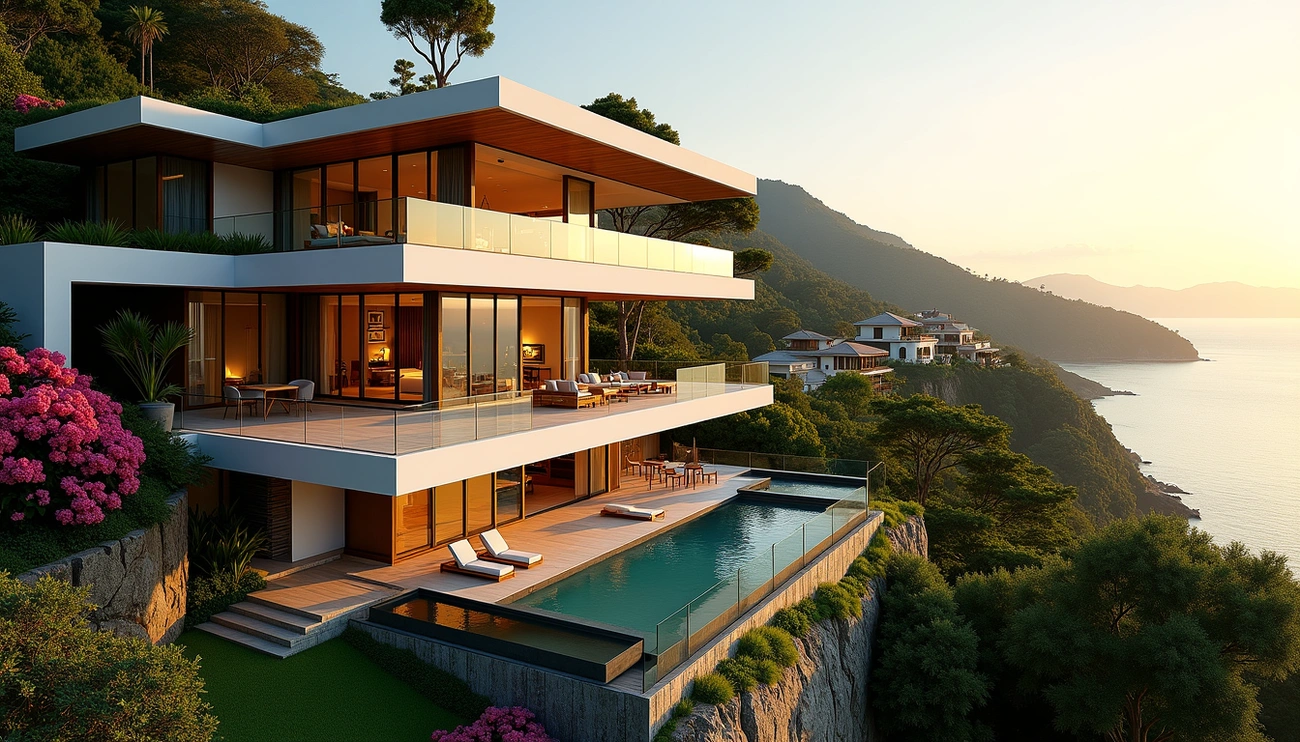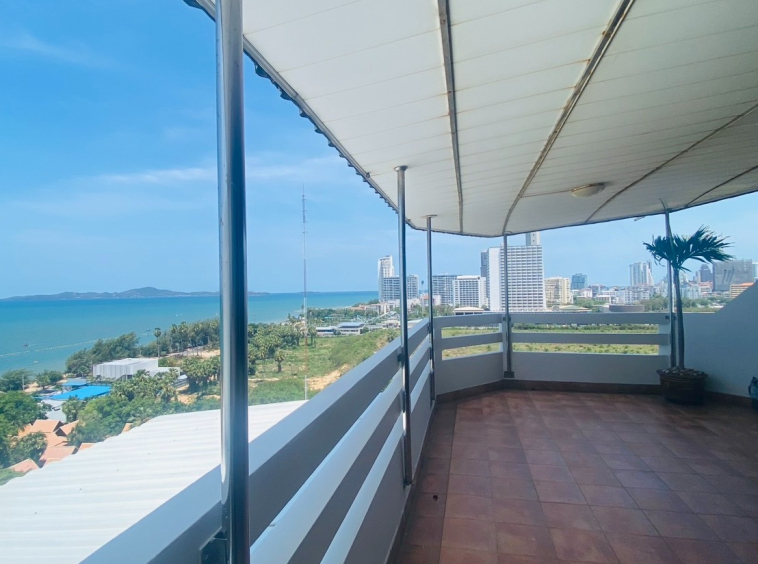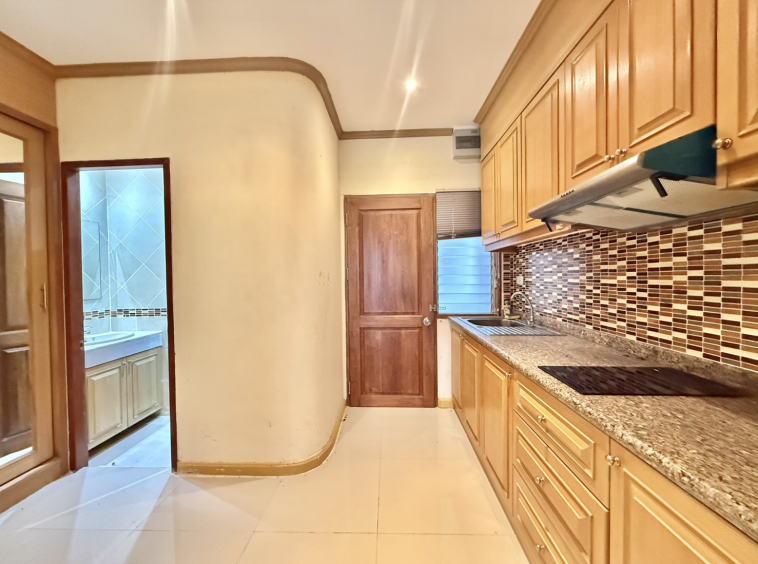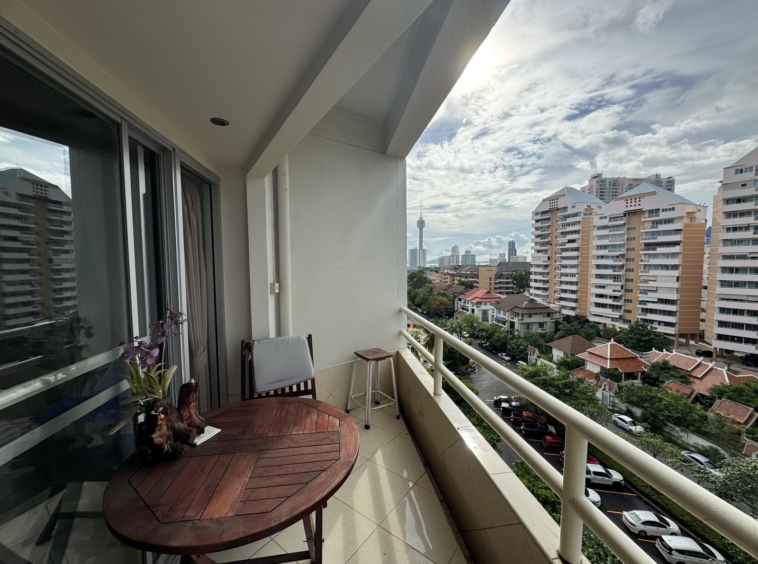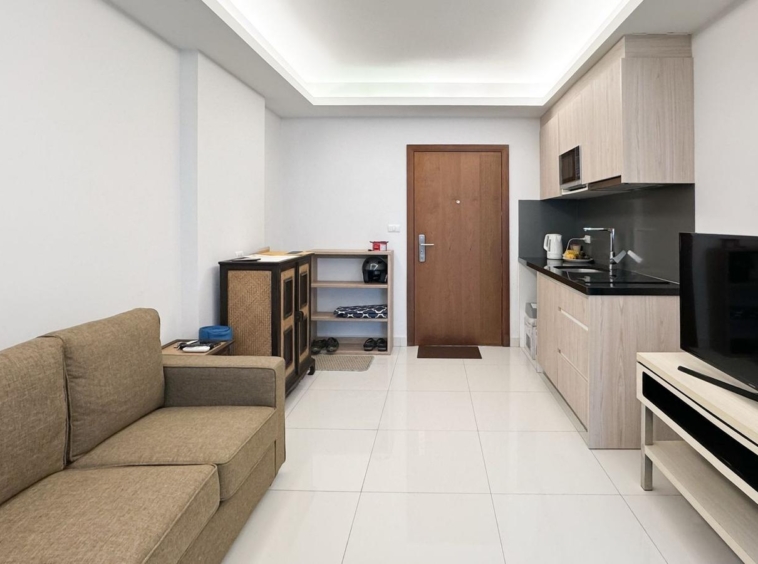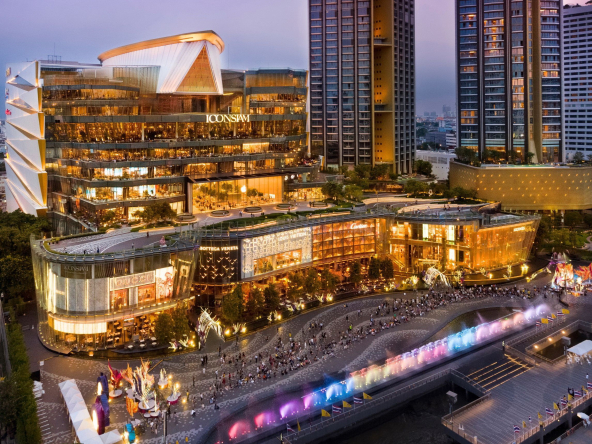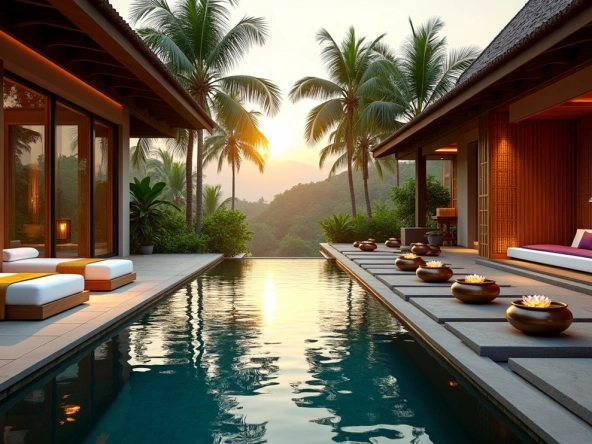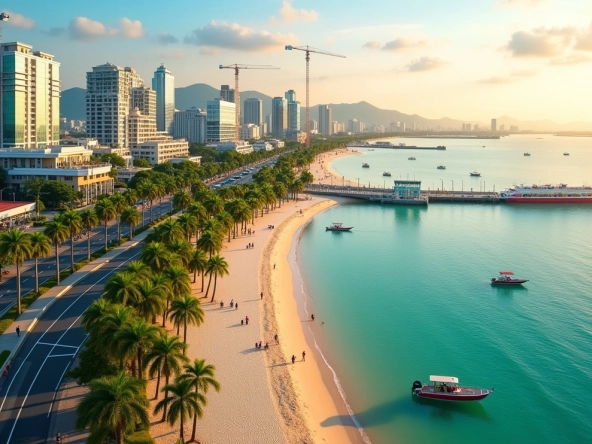The market for Phuket villa for sale has experienced an unprecedented boom, with prices soaring by a remarkable 40% during the post-pandemic recovery period. This dramatic appreciation has created both opportunities and challenges for investors and homebuyers looking to enter one of Thailand’s most coveted real estate markets.
Phuket’s property landscape has fundamentally transformed since 2022, particularly in the resale segment which now outperforms new developments across several key metrics. Furthermore, Phuket’s real estate has attracted a diverse international buyer pool seeking both investment returns and lifestyle benefits. Thailand real estate experts point to a perfect storm of factors driving this surge: limited island supply, increased foreign demand, and strategic infrastructure developments enhancing the region’s long-term value proposition.
This analysis examines the forces behind the 40% price surge, compares resale versus new-build performance, and explores how branded developments and changing buyer demographics are reshaping Phuket’s villa market.
Villa Prices Surge 40% Amid Post-Pandemic Recovery
Phuket’s villa market has undergone a dramatic transformation in recent years, with property values escalating at unprecedented rates. Contrary to historical patterns of modest 4-5% annual increases, the post-pandemic era has witnessed properties in some projects appreciating by 20%, 25%, or even 30% in a single year. This acceleration represents a significant departure from traditional growth rates and signals a fundamental shift in the island’s real estate dynamics.
What triggered the price spike in 2024–2025?
The explosive growth in Phuket villa prices stems from a perfect storm of market conditions. Most notably, the post-pandemic period released substantial pent-up demand as travel restrictions in 2020-2022 had delayed many intended purchases, especially from international buyers unable to enter Thailand. Once borders reopened, the market experienced a surge of previously deferred transactions.
Several key factors contributed to this remarkable price growth:
- Limited supply: Land scarcity, especially on the desirable west coast, created intense competition for available properties
- Changing demographics: A significant influx of foreigners relocating to the island and seeking family homes rather than investment condos
- Construction costs: Rising material and labor expenses forced developers to increase prices
- Land value appreciation: Underlying land values increased by 20-30% in prime regions
Additionally, the recovery began earlier than in most resort markets thanks to Thailand’s Sandbox program launched in July 2021, which allowed vaccinated international travelers to enter Phuket without quarantine. This initiative kickstarted demand while highlighting the significant supply shortfall.
How tourism and foreign demand fueled the surge
The direct correlation between tourism and property values remains one of the most significant drivers of Phuket’s real estate market. After the inevitable slowdown during Covid, tourist numbers steadily climbed back toward the 2019 historic highs when Thailand received approximately 38 million tourists, with nearly 13 million visiting Phuket.
In 2024, a 20% increase in visitor numbers created a surge in demand for high-end properties, including sea-view condos and luxury villas. Moreover, the market has seen a shift from investment-focused purchases to lifestyle-driven decisions, with many buyers seeking second homes in this tropical paradise.
Foreign nationals now account for approximately 60% of all property transactions, with Russians making up 70% of foreign purchases in 2023. Other significant buyer groups include Europeans (UK, France, Germany), Australians, and returning Chinese investors. Many of these international buyers understand Thailand’s leasehold system and are prepared to pay in cash.
Which areas saw the highest appreciation?
Bang Tao/Cherng Talay experienced the sharpest appreciation, with some areas growing over 40% since 2020. This remarkable growth stems from luxury developments, lifestyle infrastructure such as Laguna and Boat Avenue, and proximity to both beaches and the airport. However, as land becomes increasingly scarce in these prime locations, developers have expanded to adjacent areas.
Notably, villa projects have expanded to zones adjacent to Cherng Talay, namely Phru Champa and Bang Jo. These emerging areas offer better value while maintaining accessibility to popular amenities. Meanwhile, properties near the new Phuket International Airport (scheduled to open December 2025) may see 10-15% gains.
High rental demand continues to support property values in Bang Tao, Cherng Talay, and Rawai, with well-managed pool villas achieving rental yields between 5% and 10% annually. The combination of capital appreciation and rental income potential has cemented Phuket’s reputation as one of Asia’s most attractive real estate investment destinations.
Jomtien Condotel – 1 Bedroom Sea View Condo for Sale
- ฿7,900,000
- Bed: 1
- Bath: 1
- 115.488 Sqm
- Condo
Baan Suan Lalana Jomtien – Studio Condo for Sale
- ฿1,790,000
- Beds: Studio
- 40.50 Sqm
- Condo, Studio
View Talay 1 – Studio Condo for Sale
- ฿3,580,000
- Beds: Studio
- 57 Sqm
- Condo, Studio
Laguna Beach Resort 2 – 1 Bedroom Condo for Sale
- ฿2,110,000
- Bed: 1
- Bath: 1
- 37 Sqm
- Condo
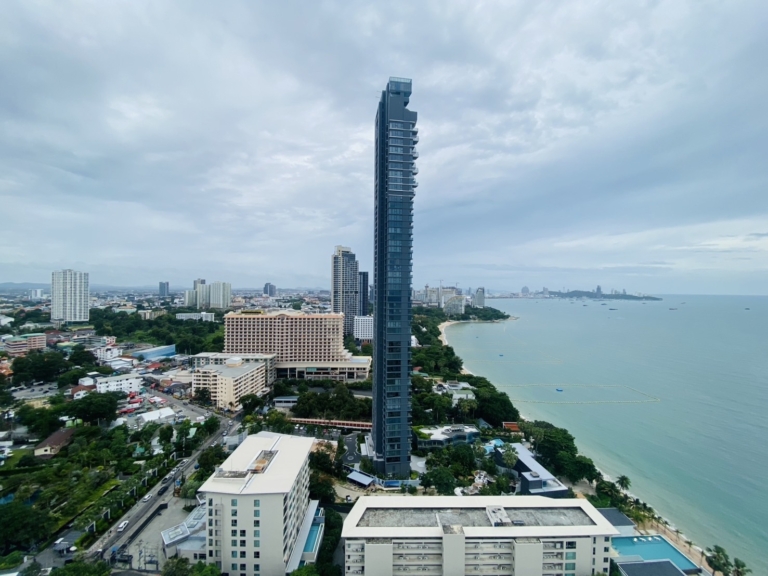
Resale Market Outperforms New Builds in Key Metrics
As Phuket’s property sector matures, a clear performance gap has emerged between resale and new-build properties across several critical metrics. Secondary market properties (resales) are gaining increasing market share, offering distinct advantages over primary market (new-build) alternatives. This shift represents a significant evolution in Thailand real estate dynamics, creating opportunities for savvy investors.
Price per sqm: resale vs new-build comparison
The most striking difference between resale and new-build properties lies in their price per square meter – the clearest measure for comparing value across different projects and unit sizes. New condominiums in prime areas now command approximately THB 139,000/sqm, whereas comparable resale units trade for around THB 100,000/sqm. Another analysis shows new condo pricing reaching THB 4,819,310.54/sqm against THB 3,442,364.67/sqm for quality resale units—a substantial THB 1,376,945.87/sqm difference.
This price disparity stems primarily from two factors: liquidity and market maturity. Individual sellers who purchased properties several years ago at lower prices can profitably sell below current developer rates, effectively undercutting new development prices while still securing satisfactory returns.
The gap is even more pronounced in the villa segment:
Branded new villas: Up to THB 162,000/sqm
Standard resale villas: Approximately THB 73,000/sqm
Despite this price advantage, resale properties often feature prime locations in established neighborhoods with developed infrastructure and amenities—a significant consideration for buyers seeking immediate lifestyle benefits.
Rental income potential and time-to-income
For investment buyers, the “time-to-income” metric proves decisive in favoring resale properties. Unlike new-build properties that require waiting 18-24 months (sometimes longer) for completion, resale villas and condos offer immediate income generation. Many resale properties come with existing rental management and sometimes even sitting tenants, allowing investors to begin collecting returns immediately after transfer.
This advantage compounds over time, as a resale property might generate substantial rental income during the period when an equivalent new-build remains under construction. Consequently, the total return calculation often favors resale properties despite their potentially lower long-term appreciation rates compared to prime new developments.
Rental yields from well-managed resale properties remain competitive, with greater negotiation flexibility on price and inclusions further enhancing the investment case.
Legacy layouts and livability advantages
Perhaps the most underrated advantage of resale properties lies in their physical characteristics. Legacy developments frequently feature more generous floorplates and layouts compared to modern, efficiency-driven designs. A one-bedroom unit in an older development might “live” more like a contemporary two-bedroom, delivering superior rental appeal and resale potential over time.
Resale properties often possess unique character and architectural styles lacking in standardized new developments. Mature landscaping and established surroundings create an immediate sense of home that new builds require years to develop. Furthermore, resale properties offer renovation and customization opportunities that can significantly enhance both lifestyle quality and property value.
Nevertheless, potential buyers must balance these advantages against considerations including:
Possible higher maintenance costs
Outdated designs requiring updates
Limited structural modification potential
For investors and end-users prioritizing immediate occupancy, established locations, and value-oriented acquisitions, the resale market provides compelling opportunities despite the allure of new development marketing and amenities.
Branded Villas and Condos Command Premiums
Brand association has emerged as a powerful price driver in Phuket’s property market, with luxury branded residences establishing themselves as the gold standard for high-net-worth buyers. First and foremost, the impact of branding on property values is quantifiable and substantial across all categories.
How branding influences pricing and buyer trust
The premium commanded by branded properties is striking—branded condominiums average THB 181,000 per sq.m, representing a 28% premium over non-branded units (THB 141,000 per sq.m). The difference becomes even more pronounced in the villa segment, where branded properties command prices up to 2.2 times higher than their non-branded counterparts (THB 162,000 vs. THB 73,000 per sq.m).
These price differentials reflect not just the value of the name itself but also buyer confidence in project quality. Buyers assume international hotel brands will only associate with developments that meet their exacting standards. Indeed, this confidence translates to enhanced resale value—a key consideration for investors planning eventual exits from the market.
Examples of branded projects and their performance
Phuket has transformed into the largest leisure branded residences market globally, with current supply exceeding USD 2.3 billion in value. The island’s premier developer, Laguna Phuket, exemplifies this shift, pivoting strategically from hotels to branded real estate.
Notable branded developments include The Standard in Bangtao, Banyan Tree Residences, and The Residences at Sheraton Phuket Grand Bay Resort. Cherngtalay leads pricing among these branded properties, with luxury villas reaching as high as 137.9 million baht.
Why investors prefer branded over generic builds
Beyond price premiums, branded residences offer compelling advantages that justify their higher cost. Owners gain access to established rental programs with reliable lease-back options that boost rental income. Annual returns typically range from 5% to 8%, with many operators providing some form of guarantee.
Professional management represents yet another benefit, as owners can “piggy back” on hotel marketing systems without handling day-to-day operations. This arrangement proves ideal for international investors seeking hassle-free ownership.
Luxury branded residences also provide comprehensive lifestyle experiences including professional management, brand prestige, rental income potential, and unique amenities. For jet-setters and digital nomads, global networks like Four Seasons and Mandarin Oriental often offer reciprocal benefits across their locations.
As competition intensifies among branded properties, future differentiation will increasingly depend on post-sale delivery, customized services, rental management effectiveness, and overall owner experience—factors that maintain long-term value proposition and ensure continued premium pricing in Phuket’s thriving villa market.
Foreign Buyers Drive Demand for Lifestyle Properties
International buyers now dominate Phuket’s property landscape, accounting for approximately 60% of all transactions. This foreign-driven demand has fundamentally altered the island’s real estate dynamics, creating a market that caters specifically to international preferences and expectations.
Top buyer nationalities: Russia, China, Europe
Russians have emerged as the leading force in Phuket’s property market, representing 70% of foreign purchases in recent years. Throughout 2023-2025, Russian buyers consistently sought high-end pool villas, often conducting cash transactions that accelerated sales cycles and boosted developer margins.
Prior to the pandemic, Chinese investors dominated certain segments of the market. Although Chinese participation has temporarily diminished—with tourist arrivals declining 31.2% year-on-year in early 2025—industry experts anticipate their eventual return.
Europeans (primarily from the UK, France, and Germany) form the third major buyer group, alongside growing contingents from Uzbekistan, Kyrgyzstan and India. Interestingly, wealthy Thai nationals have also entered the luxury segment, now accounting for approximately 50% of premium property purchases in areas like Laguna—a significant increase from their previous 15% market share.
Shift from investment to lifestyle-driven purchases
Perhaps the most consequential trend is the transition from purely investment-focused acquisitions to lifestyle-driven decisions. After the COVID-19 pandemic, buyer motivations fundamentally changed as families and professionals began seeking permanent or semi-permanent bases in Asia.
The rise of remote work has made Phuket viable for global professionals, while the island’s growing number of international schools attracts relocating families. As one developer noted: “It’s easier to make billions selling villas to foreigners than selling houses to Thais”—reflecting how international buyers often prioritize quality of life over financial considerations.
Why Phuket is seen as a second-home destination
Phuket has successfully positioned itself as a global luxury lifestyle destination that attracts not just tourists but high-spending visitors who often return annually. The island offers a compelling value proposition combining tropical climate with practical amenities essential for long-term living.
Unlike many tropical destinations, Phuket provides international-standard hospitals, schools, shopping malls, and diverse dining options. This infrastructure makes it particularly attractive for families, retirees, and long-stay visitors contemplating permanent relocation.
The economic advantages are equally compelling—living costs and healthcare expenses remain significantly lower than in Western urban centers. Simultaneously, accessibility through direct flights connecting to over 50 global cities enhances Phuket’s appeal as both a vacation home and primary residence.
Infrastructure Projects Boost Long-Term Value
Strategic infrastructure investment continues to underpin Phuket’s growing appeal for property buyers. Major projects totaling over THB 42.6 billion are currently reshaping the island’s accessibility, amenities, and livability.
Airport expansion and transport upgrades
Phuket International Airport is undergoing significant expansion to increase passenger capacity from 12.5 million to 18 million annually by 2029. Currently handling over 16 million passengers in 2025, the airport has already upgraded runways, taxiways, and aircraft parking bays to boost throughput to 25 aircraft per hour. A new international terminal of 100,000 m² is planned, with design completion expected early next year.
Transport improvements include the 30.6 km Phuket Elevated Expressway (Muang Mai–Koh Kaew–Kathu) worth THB 46 billion. Cabinet approval is expected by late 2025, with completion targeted for 2029–2030. Additionally, Highway 402 upgrades have been completed, with Highway 4027 expansion to four lanes scheduled by 2026.
New malls, mixed-use developments, and lifestyle hubs
Phuket’s commercial landscape currently features 12 shopping and community malls with approximately 250,000 square meters of leasable space. Seven upcoming projects will enhance this offering, including Siam Premium Outlet and the Central Phuket expansion.
Bumrungrad International Hospital in Mai Khao represents a significant addition to northern Phuket’s amenities. This high-end medical facility will position the area as a premier medical and residential hub.
How infrastructure supports property appreciation
These developments directly impact property values, accordingly supporting long-term investment returns. The Phang Nga–Phuket Water Pipeline, a THB 3 billion project set for completion by 2027, addresses water shortages that have previously constrained development.
Land prices have increased by more than 600% since 2005. This growth has remained stable throughout global crises, reflecting how infrastructure development has insulated Phuket’s property market from external financial shocks.
Conclusion
Phuket’s villa market has undeniably entered a new era of growth and transformation. The remarkable 40% price surge since the pandemic represents far more than a temporary spike – it signals a fundamental shift in how global investors and lifestyle seekers view this tropical paradise. Limited land supply, especially along the coveted west coast, continues to drive competition for available properties while changing buyer demographics reshape market dynamics.
Resale properties now offer compelling advantages over new developments. Buyers benefit from immediate income generation, avoiding the 18-24 month waiting period typical with new builds. Additionally, these established properties frequently feature more generous layouts and mature landscaping that new projects simply cannot replicate, despite their modern marketing appeal.
Branded residences have emerged as the ultimate status symbol within Phuket’s luxury market. The substantial price premiums these properties command – 28% for condominiums and 220% for villas – reflect not just name recognition but also buyer confidence in quality standards and professional management. This trend toward branded living appears poised to strengthen as global hotel chains expand their residential offerings across the island.
The demographic profile of Phuket property buyers has shifted dramatically. Russians now dominate foreign purchases while wealthy Thais increasingly enter the luxury segment. Perhaps most significantly, buyer motivations have evolved from pure investment calculations toward lifestyle-focused decisions. Remote work opportunities have transformed Phuket from vacation destination to viable year-round residence for global professionals seeking tropical living with modern conveniences.
Major infrastructure projects underway across the island will certainly enhance Phuket’s long-term investment proposition. Airport expansions, new highways, water pipelines, and medical facilities address historical challenges while positioning the island for sustainable growth. These improvements, coupled with Phuket’s natural beauty and established hospitality culture, suggest the current property boom represents not just a market cycle but rather a permanent elevation of Phuket’s status among global luxury real estate destinations.
